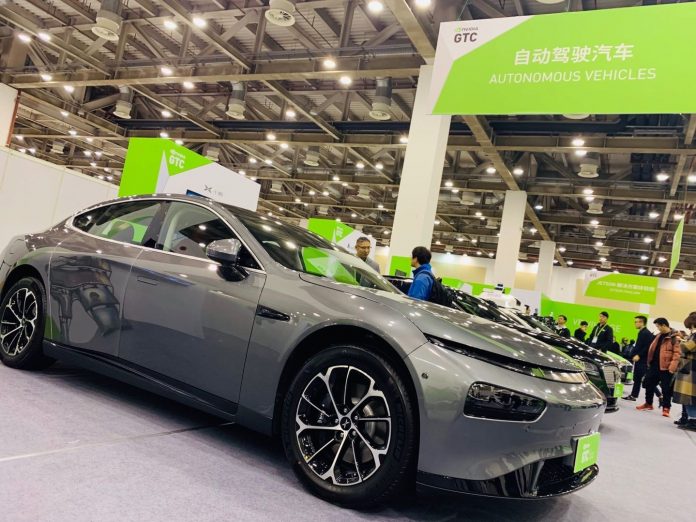Xpeng Motors will prioritize its end-to-end autonomous driving R&D, introducing Level 3 autonomy in production models in 2020, said Dr. Xinzhou Wu, Vice President of Xpeng’s Autonomous Driving at NVIDIA GTC China 2019 in Suzhou. Dr. Wu provided details of the autonomous driving architecture of the upcoming P7 intelligent sedan — also on show at GTC China 2019 — which is the first production vehicle to feature the NVIDIA DRIVE AGX Xavier system-on-a-chip (SoC) autonomous driving platform.
The P7’s Smart Electric Platform Architecture (SEPA) runs on a powerful twin-chip system, with the NVIDIA Xavier SoC supporting XPILOT, and Qualcomm’s top-line vehicle processor Snapdragon™ 820A for intelligent services, along with a suite of cameras (including in-cabin camera), radars, HD-map, and ultrasonic sensors.
The P7 will be the first production vehicle to carry next-generation millimeter wave radar with enhanced field of view and increased bandwidth, along with increased detection distance and angular accuracy. The P7’s advanced auto-parking function is supported by four 360-degree cameras, enabling the highest auto-parking success rate among existing production vehicles. The P7’s positioning module has HD map resolution reaching decimeter level (relative positioning accuracy < 0.3%), also the highest among existing production vehicles.
XPILOT has already been through two generations of upgrades, and XPILOT 3.0’s implementation on the P7 will enable L3 functions, including autonomous driving on highways, full-proprietary synergetic sensor capability and AI-based intelligent cockpit, all in production vehicles in 2020. By 2021, XPILOT 3.5 will be able to perform full-scenario highway autonomous driving, upgradeable later to XPILOT 4.0 via OTA updates.














